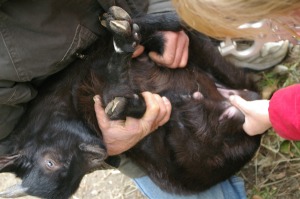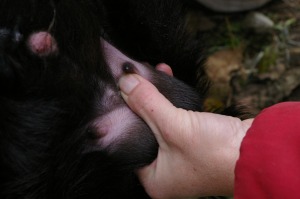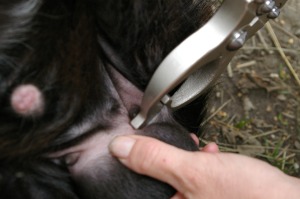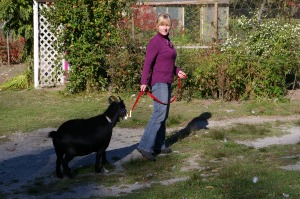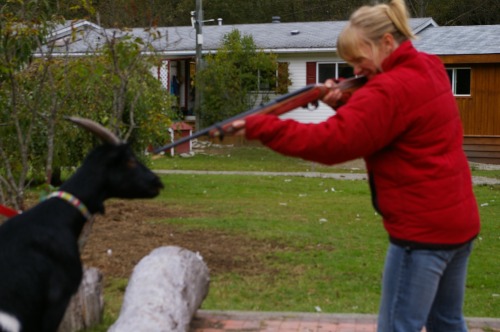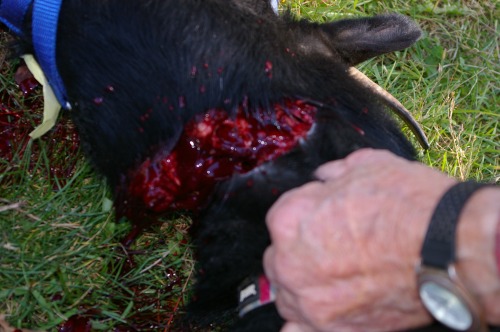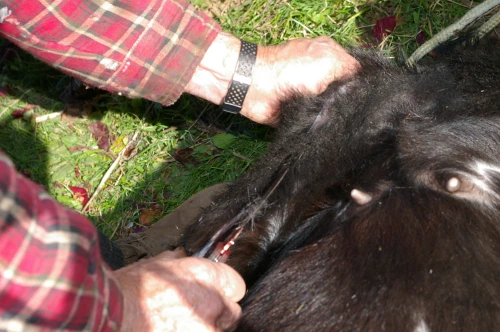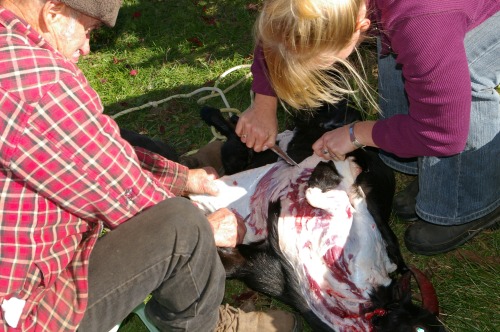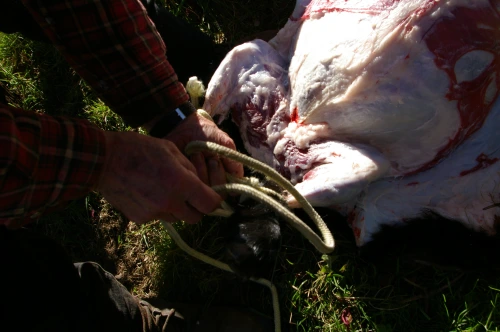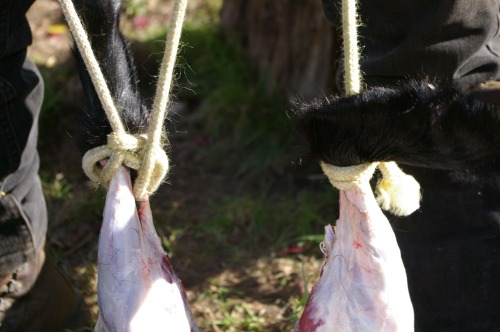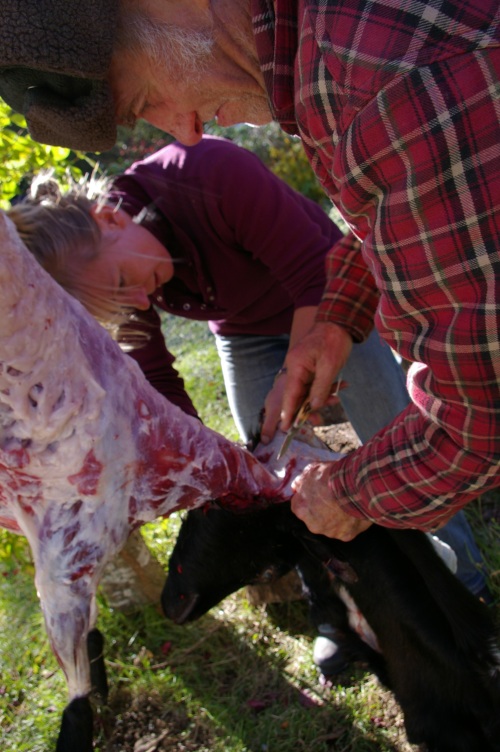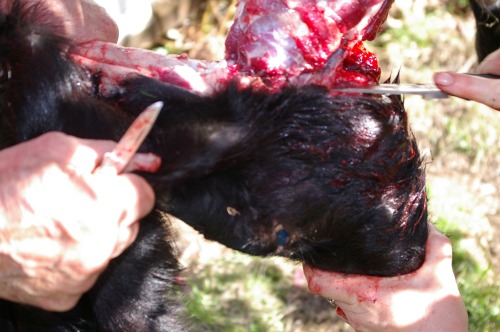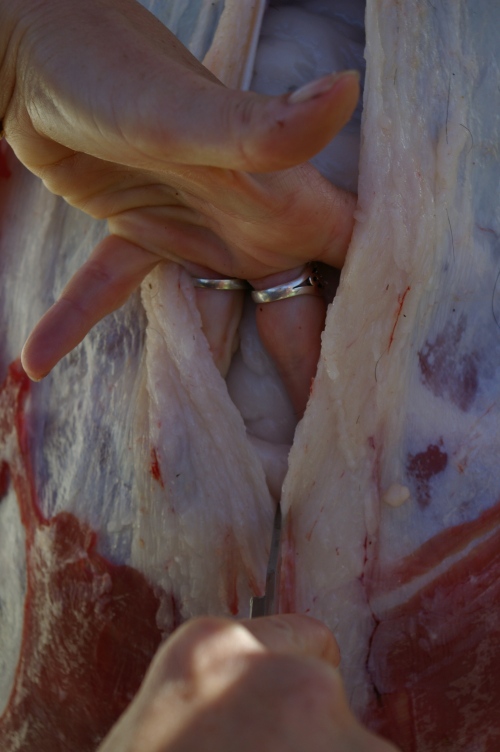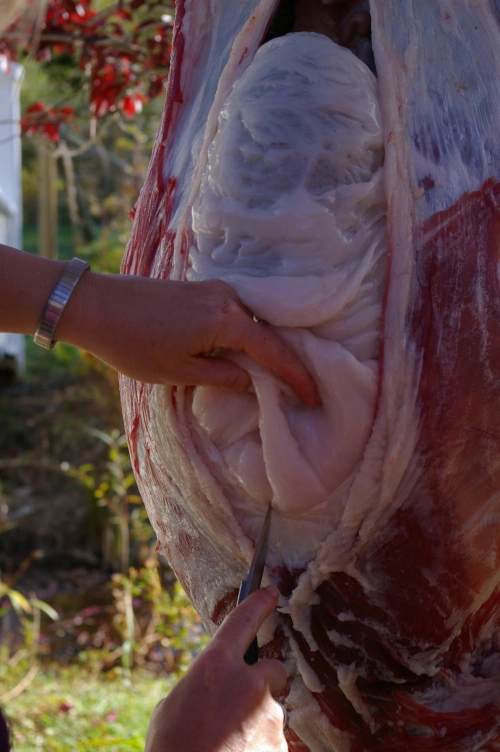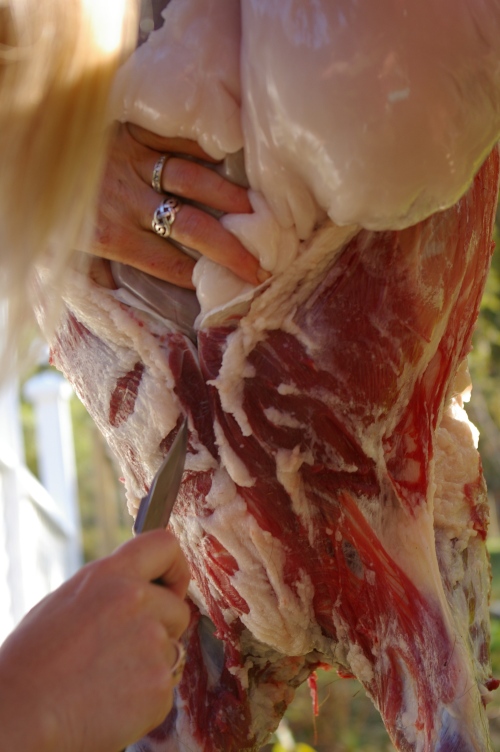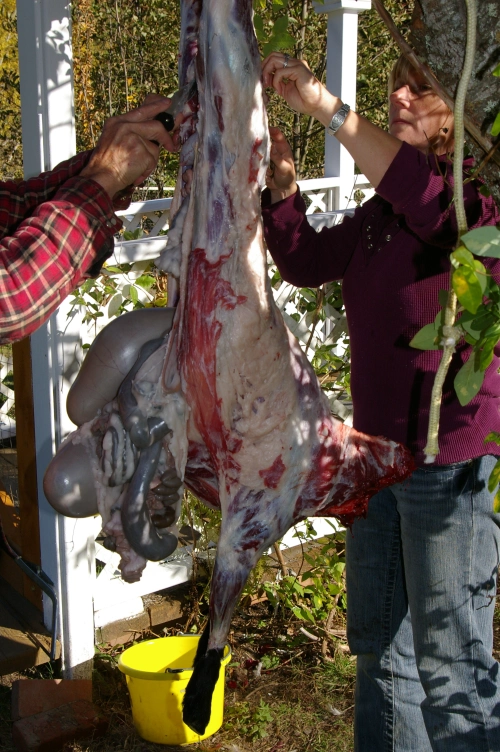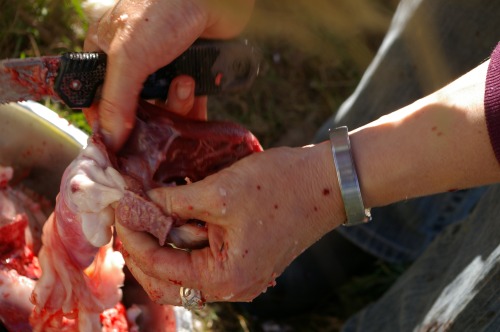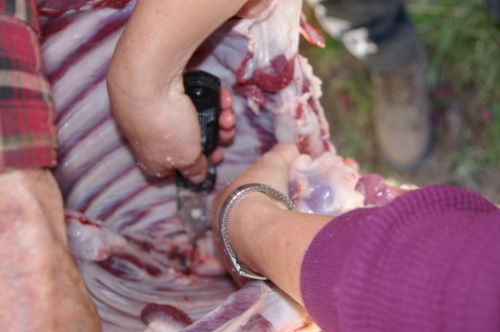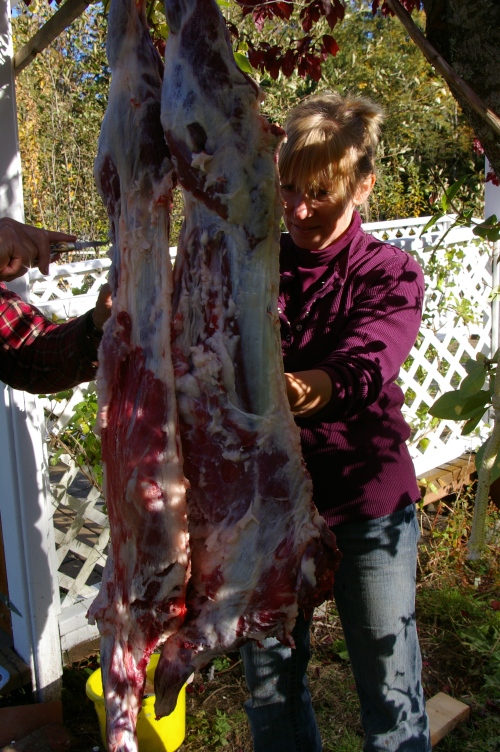Last week we were lucky enough to find reliable farm-sitters and sneak away to my brother’s wedding near Vancouver. This was not an easy task thanks to the fires in our area. We had planned on driving out but when we got to the bottom of ‘The Hill’ the officials were there just closing the road and bringing the pilot car off the mountain. “I could feel the heat from the fire right through the truck!” exclaimed one of the men, looking thrilled to be out of harm’s way.
Under normal circumstances this would not be a problem. If I lived near a city where there were lots of flights to choose from, and normal sized planes that hold a decent number of people, I would not have begun to panic during the hour long return drive home down the valley. But in Bella Coola getting a last minute seat on a flight is not always guaranteed! Here, when they use the ‘big’ plane it holds 19 passengers. Furthermore, although we have a scheduled flight every day, there is no guarantee the plane will get in. Often it is canceled due to heavy clouds, and in this case, I was worried that the smoke beginning to billow off the mountainsides might make it impossible to land. Nevertheless, I refused to believe that I might not make it to my brother’s wedding.
Thankfully, the stars were aligned, we got seats on the flight to Vancouver and managed to arrive in the nick of time (I was part of the wedding party!). That was the good news. The bad news was I didn’t get to stay long and visit anyone after the wedding: a check-in call to our farm-minders brought news of evacuation alerts, so we had to get on the plane and come back home right away, thanks to the threat of the fires.
During our three days away our farm-sitters noticed that Shiraz was no longer feeding one of her kids. They were observant enough not only to notice this new behaviour from her but also to take control and hold her while the little one fed–the mark of dependability in a babysitter! Now that we are back, things have gotten worse and she is barely feeding any of them.
Goat breeding: If only I’d read the fine print
While researching the reasons why a doe might reject her kids, I came across this site which describes my experience with Shiraz to a T!
Many new producers do not know what to expect from their stock, and some are very unhappy when they discover that goats are not always the easiest animals to manage.
In light of my experience with her thus far (see Oh what a night), I would say that Shiraz qualifies as having achieved ‘not the easiest to manage’ status. The difference between Shiraz and my other mother Fatty-Fat is extreme, and this is the kind of experience the above article describes. My experience is particularly marked in that I only have the two goats, so I don’t have the 10-15% of my herd with this dysfunctional behaviour as the article suggests may be the case, and what producers should allow for. Instead, I have a 50% problem! Thankfully, this translates to only one goat and three kids to care for–I don’t know what I’d do if it were several goats and a full nursery! Perhaps I should have done some more research before launching into goat breeding! The next paragraph in the article unfolds as if reading my thoughts:
The majority of new producers receive a big reality check when their first kidding season arrives if they have not done their research and adjusted their expectations accordingly.
You don’t say. I’m not really sure what I expected, so I don’t really have many expectation adjustments to work through. I do, however, have to figure out how to get these kids fed! I thought it would be easiest if I could trundle down to the local veterinarian’s office (if I had one, that is!) and get milk replacement and a milker/feeder type thing and take over the job myself. This article doesn’t support my wishful thinking:
Some people bottle feed, but I don’t recommend this… I have also had big problems with the milk replacer actually killing the kids. It causes a high percentage of the kids (over 50% in my experience) to develop ulcers which eventually rupture killing the kid.
As luck would have it the vet was going to come the 458 kilometers into town this weekend and I was considering asking her to bring some milk replacer, but thanks to the fires she’s had to cancel her trip! Now out of options, I’ve taken to holding Shiraz between three and four times per day in order to let the little fellows feed: basically whenever I hear them crying.

The key to maintaining some control over her is to hold her tail, this way she is less likely to sit down to evade her kids.
This is not an easy task; as you can see, Shiraz is a strong goat! She is also a smart goat and has all sorts of tricks she pulls in order to evade her milking duties. One of the most effective is to sit down while I’m holding her. This is very effective and difficult for me to oppose. I have found that by grabbing hold of her tail she is far less likely to try this one on. Keeping ahead of her is a monumental task. Not only that; it is taking a huge amount of my time. I hold her for about a 1/2 hour each session in order to let all three feed to their tummies’ contentment.

One satisfied, full bellied kid.
I’m hoping she will once again accept her kids, though I’m alarmed at how long the article suggests this may take:
Does that are intent on killing the rejected kid(s) require more drastic measures. I generally put a halter on them a couple of times a day and tie them to the fence so their kids can eat. Usually they will eventually accept the kids, but it may take a month or more before they do. You will have to decide whether the time involved is worth it.
Of course the one kid she is rejecting outright is my favourite, Sinbad. So it’s worth it! Oddly, he is the biggest and was her first born. I have checked her bag to make sure it is soft and pliable and giving milk, and there doesn’t seem to be anything wrong with any of the kids which can be a reason the doe will reject one or more. When I do hold her and they feed, they do so willingly and with gusto complete with satisfying sound effects, and until satiated. I thought perhaps she feels she doesn’t have enough milk for three. At first I was alarmed with both her and Fatty as they began to lose weight during the first few days after kidding. Again, I checked with my doctor friend who said that this is certainly normal with nursing women. I upped their feed rations and within days brought their weight loss to a halt. Shiraz seems to be holding condition nicely and has a full, heavy bag.

Performing acu-pressure on Shiraz helps her calm down.
One of the many things I’ve learned through working with my horse is about horses stress and how to relieve it through acu-pressure points. While I’m holding Shiraz, I use the acu-pressure point just below her nose in order to help calm her down. In horses, this point is the locus of an endorphin release. I have used it on myself and know that it works for humans, therefore, I presume that it will also work for Shiraz. Much to my relief it seems to have some effect.

After some light acu-pressure Shiraz relaxes enough for me to stand up and take only a light grip on her while her kids continue to feed.
While contemplating my predicament, I have been considering my next year’s breeding program and my diminutive scale farm, and wondering who I should cull. Sundown didn’t get pregnant at all this year so she is on the list of possibles because she may be sterile, though of course this is not for certain. Thanks to Shiraz’s insistence on maintaining the ‘not the easiest to manage’ status, she too has made the list. There is no way I can do all this again with Shiraz if this is the way she’s going to behave each pregnancy, although, much to my chagrin, according to the article this is not usually the case:
In my own operation 10-15% of the does that kid in a year decide to reject at least one of their kids, and the does that did so this year are not the same does that pulled that stunt last year.
My doctor friend and her doctor husband dropped in yesterday to see the farm and I relayed the story to them. He said that he’d had a dog that ate all her pups many years ago and they found out later that it was due to a vitamin deficiency; he suggested this may be the problem with Shiraz. I too had wondered about this but had dismissed the idea because of the conditions in which I’m raising them: she has sweet feed two or three times per day, access to good hay, a mineral lick, free access to a free-form mineral powder suggested to me by the vet, and all the good clean native forest browse she could ever possibly dream of having. These goats are in fact actually quite spoiled.
Upon hearing this, my other doctor friend said that it may be an absorption problem and/or simply a lack of calcium due to the heavy demand that bringing up three kids has on her body, so she suggested that I get some calcium supplements and see what happens. When I asked if I should get liquid calcium she turned to me and laughed: “Just get Tums and crush it in her morning grain.” This doctor friend really should have been a vet! This morning, following my Goat-Doctor’s advice, I got the peppermint flavoured Tums out. Before I had a chance to crush the tablet into her food dish Shiraz snarfed it out of my hand, scoffed it down in seconds flat and immediately snuffled around for more. Either she really likes peppermint flavour or she realizes this is what she is missing. In light of the fact that none of my goats will touch the mint in my garden, I’m suspecting it is the latter!
My guess is that my doctor friend is correct, that having three kids makes her more susceptible to this deficiency than Fatty-Fat who is happy in her new role as mama-goat to twins. I’ll keep up with the calcium tablets, reinstate the morning molasses tea and see if this makes a difference. If anyone has other suggestions, I would welcome them!
…As I write this I reflect that in this whole process I am measuring my own situation. I sympathise with Shiraz. I never wanted children and chose not to have them. When we husband animals we take away their right to choose. After going through this with her I wonder if she too would have chosen not to have kids if she had her druthers!
















